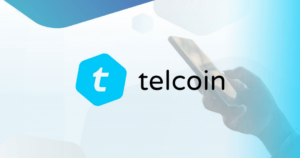Base Network Pushes for Stage 1 Decentralisation

Coinbase’s layer 2 chain, Base, begins the journey to Stage 1 Decentralisation by deploying fault proofs on the Base Sepolia testnet.
The Base network is centralised as only the operator can propose the network’s state to the Ethereum mainnet.
Fault proofs will enable anyone to propose Base’s state, and begin its transition into a decentralised rollup.
on July 23rd 2024, the Base network operator announced the deployment of fault proofs to the Base Sepolia testnet, a staging environment for running and testing applications and code before deploying on the mainnet.
According to Base’s social media post on Mirror, a Web3 social media platform, “the launch paves the way for bringing fault proofs to securely to mainnet, and completing other milestones to reach Stage 1 Decentralisation”.
Fault proofs will allow anyone to propose the root state of Base. This technical term describes submitting a summary of the Base chain, including smart contracts, account balances, and other relevant data, to the Ethereum mainnet to ensure that it is recognised.
The Journey to Stage 1 Decentralisation
According to Vitalik Buterin, Ethereum’s co-founder, Layer 2 rollups must undergo three major milestones before they can be said to be sufficiently decentralised or “take their training wheels off”.
The first stage (Stage 0 or the full training wheels stage) is when layer 2 rollups launch their mainnet. At this stage, users should be able to post transactions without cooperation from the operator, i.e., chain operators cannot freeze users’ assets. However, there does not need to be any fraud proof.
The next stage is Stage 1 Decentralisation, the limited training wheels stage, and must involve fraud proof. There can be a multi-sig override mechanism (called a security council) that can override the fraud proof in cases where the proof system code has bugs; however, it must have a 6-of-8 or stricter threshold, i.e. at least 8 participants and at least 75% agreement to override.
Also, enough participants in the multi-sig override system must be outside the organization running the rollup, in this case, Base (and Coinbase by association).
The final stage, Stage 2 or no training wheels, requires that no actor or group of actors can override the fraud proofs to post a state other than the output of the network’s code. However, this is only advisable when it is ascertained that the fraud proof code has no bugs.
Base’s Journey
Base is currently the second largest Layer 2 rollup with a TVL of $1.76 billion according to Defillama, a leading blockchain data provider. The network has grown tremendously in 2024, leveraging its affiliation with Coinbase to create a network effect that has propelled its growth.
Base’s journey to Stage 1 Decentralisation will help cement its position in the league of other networks within that stage, some being Arbitrum, OP Mainnet, and dYdX v3.
Other chains that have reached this level have issued governance tokens, however, as of writing, Base maintains that it does not intend to issue a token in the future.













